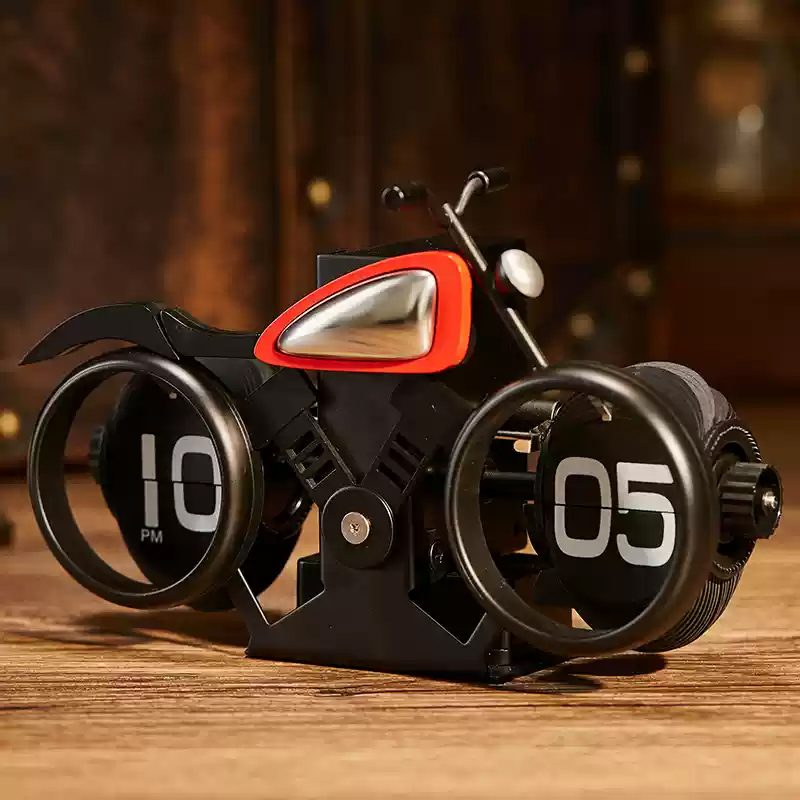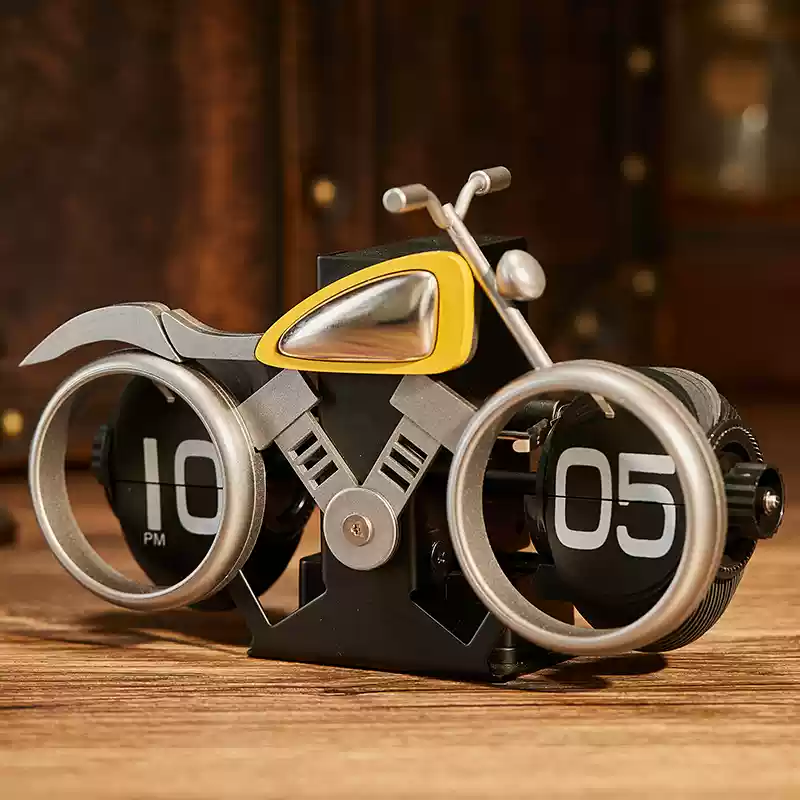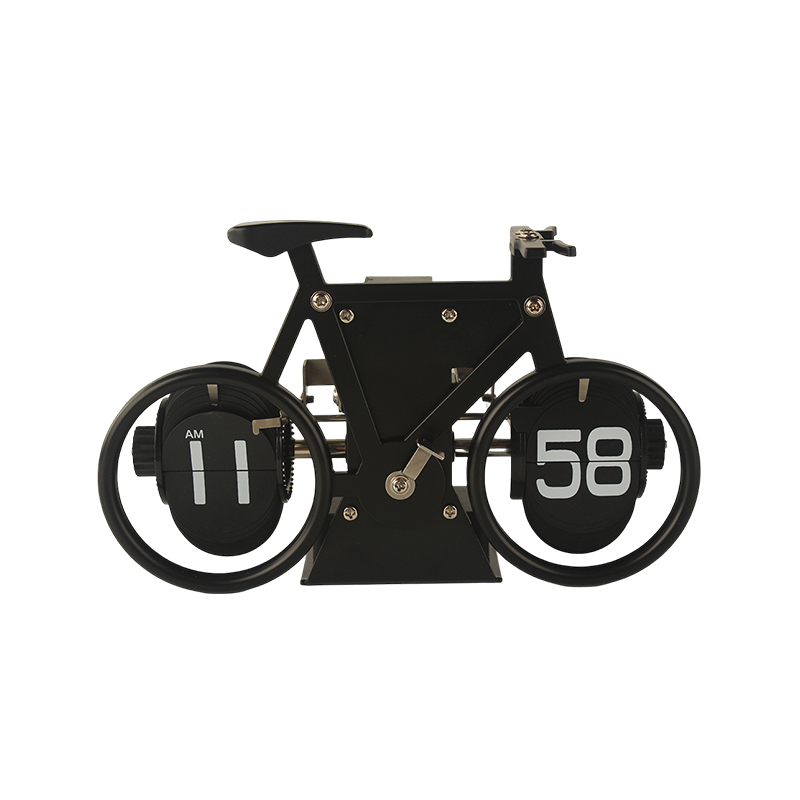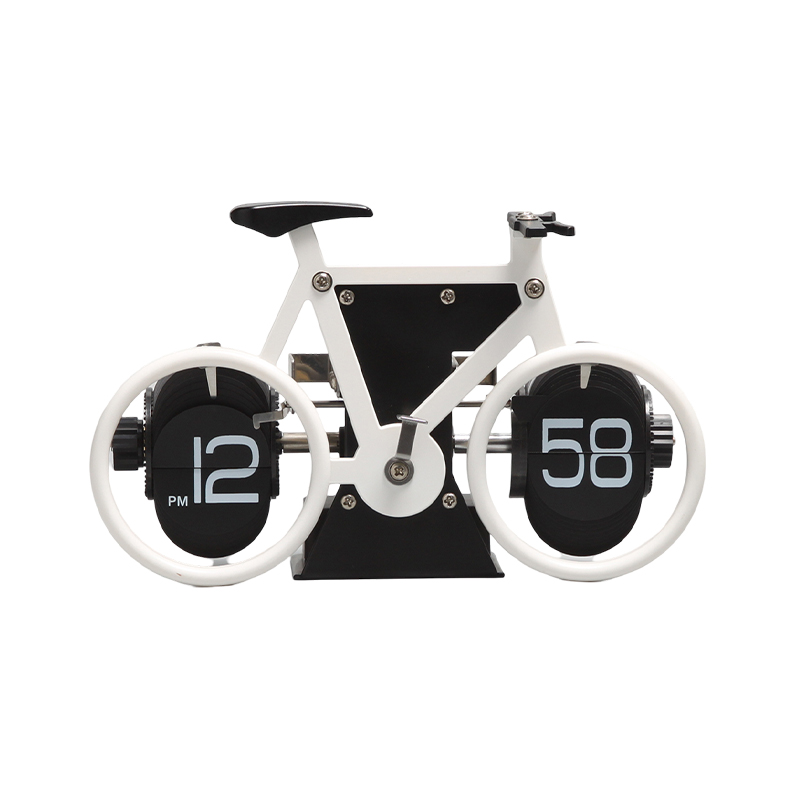How do the complex functional modules of a mechanical gear clock connect with the main drive?
Release Time : 2025-11-10
The connection between the complex functional modules and the main drive of a mechanical gear clock is one of the core aspects of mechanical watch design. Its core lies in achieving energy transfer and motion conversion through precision gear sets, while ensuring the independence and coordination of each functional module. The main drive system of a mechanical gear clock typically consists of a prime mover (such as a mainspring or weight), a transmission system (gear set), and an escapement/regulating system. Complex functional modules (such as calendar, moon phase, minute repeater, etc.) need to be connected to the main drive through additional gear sets, which must avoid interfering with the basic timekeeping while ensuring precise triggering of the functions.
In a mechanical gear clock, the gear set of the main drive system undertakes the fundamental task of energy distribution and motion transmission. The energy released by the prime mover is transmitted through a series of meshing gears and pinions, where the gears are the driving gears and the pinions are the driven gears. For watches with a second hand function, the transmission ratio from the central gear to the second wheel pinion must be precisely set to 60:1 to ensure that the second hand completes one revolution per minute. In this process, the gear tooth design is particularly crucial—traditional mechanical watches often use modified cycloidal tooth profiles (watch tooth profiles), with rounded tooth tips and straight tooth roots. This reduces meshing friction and sensitivity to manufacturing errors, thereby improving energy transfer efficiency and wear resistance.
The connection of complex functional modules requires independent gear sets to avoid motion interference with the main drive. Taking the calendar function as an example, its drive gear set is usually linked to the hour or minute wheel of the main drive, transmitting motion to the calendar ring through an intermediate gear. The number of teeth on the calendar ring must match the transmission ratio; for example, a calendar ring that jumps once a day requires a 48-tooth or 60-tooth gear to ensure precise switching at specific times each night (such as midnight). These gear sets often employ a thin design to reduce space occupation, while using elastic meshing structures (such as spring plates) to reduce the impact of assembly errors on functionality.
The connection of the moon phase function places greater emphasis on the continuity and aesthetics of movement. The moon phase disc is typically driven by the minute or second wheel of the main drive, with a reduction gear set slowing its rotation to one revolution every 29.53 days (approximately a synodic lunar cycle). To ensure the accuracy of the moon phase display, the gear set requires a fine-tuning structure, such as an adjustable eccentric wheel or screw fine-tuning device, to compensate for slight differences between the actual and theoretical lunar cycle. Furthermore, the tooth profile of the moon phase disc needs to be more refined to avoid stuttering or jumping during movement.
The interlocking of the minute repeater function represents the highest level of craftsmanship in mechanical gear clocks. The minute repeater mechanism strikes a gong to chime the time, and its drive gear set must work in coordination with the main drive and escapement regulating system. When the chime button is triggered, a series of cams, levers, and gears work together to transfer energy from the main drive to the hammer, while the reduction gears control the striking rhythm (such as the order of the hours, quarter-hours, and minutes). During this process, the gear ratio of the gear set needs to be precisely calculated to ensure that the striking force and frequency of the hammer meet design requirements, while avoiding interference with the timekeeping accuracy of the main drive. The integration of complex functional modules and the main drive in a mechanical gear clock requires careful consideration of assembly processes and adjustment precision. The gear set's shaft system needs high-precision bearings for support to reduce friction and wear; gear backlash must be controlled within micrometers to ensure smooth operation; and the triggering timing of each functional module needs to be adjusted using precision cams or lever mechanisms to achieve coordinated operation. These details directly determine the reliability, accuracy, and lifespan of the mechanical gear clock.
The integration of complex functional modules and the main drive in a mechanical gear clock represents a perfect combination of mechanical engineering and precision manufacturing. Through the design of independent gear sets, optimization of tooth profiles, application of fine-tuning structures, and control of assembly processes, the mechanical gear clock achieves precise operation of multiple functions within a limited space, retaining the charm of traditional mechanics while showcasing the wisdom of modern engineering.







